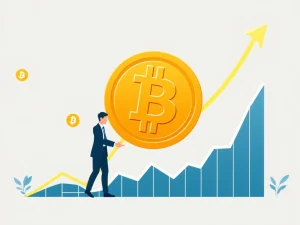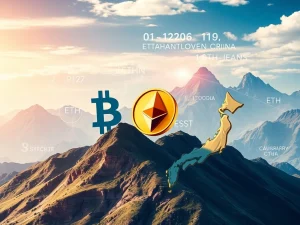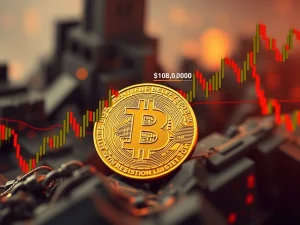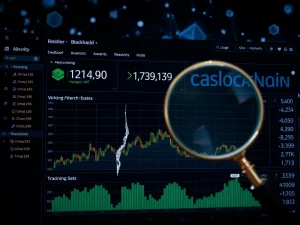Shocking Bitcoin Price Plunge Amidst Israel-Iran Tensions
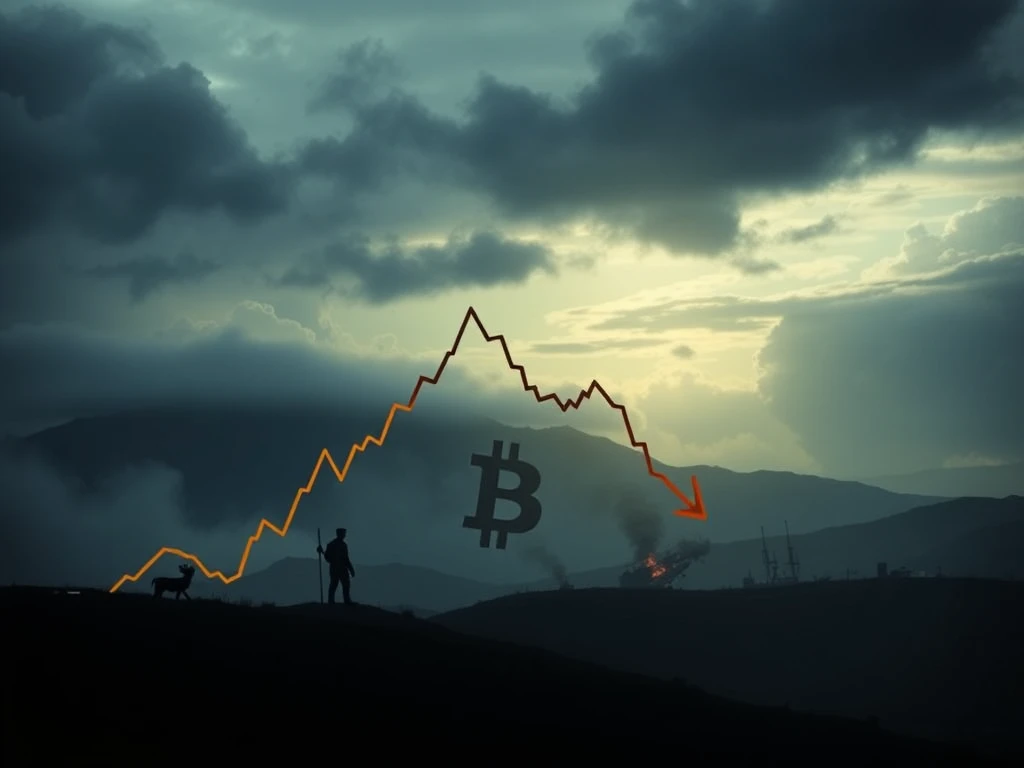
The cryptocurrency market experienced a significant jolt as the geopolitical landscape shifted. Bitcoin price saw a sharp decline following reports of Israel launching airstrikes on Iran, catching many traders off guard and highlighting the increasing sensitivity of digital assets to global events.
How the Israel Iran Conflict Impacted Markets
The immediate aftermath of the reported strikes saw a swift reaction across global markets. While traditional safe havens like gold and commodities like oil initially rose, Bitcoin’s trajectory was downward. Explosions were reported in Iran, leading to a rapid drop in Bitcoin price from over $106,000 to roughly $103,000 within a short period. This correlation between geopolitical events and crypto market movements underscores the growing integration of digital assets into the broader financial ecosystem, making them susceptible to international instability.
Analyzing Recent Crypto Market Volatility
The recent price action is a stark reminder of the inherent crypto market volatility. Just days before the geopolitical flare-up, Bitcoin had shown bullish momentum, reaching levels near its previous all-time high. The sudden reversal led to substantial liquidations of leveraged long positions, totaling hundreds of millions of dollars. This pattern of sharp swings, driven by both internal market dynamics and external global factors, is characteristic of the crypto space and requires traders to remain vigilant.
Here’s a quick look at the immediate impact:
- Bitcoin dropped approximately 2.8% in 90 minutes.
- Over $427 million in long positions were liquidated.
- Traditional assets like gold and oil initially saw gains.
- The move mirrored a similar reaction during a previous escalation in October.
What are Analysts Saying?
Crypto analysts offered differing perspectives on the situation. Some noted that while the initial reaction saw Bitcoin fall as gold and oil rose, historical precedent suggests this trend could reverse. During a previous incident involving Iran and Israel, Bitcoin initially dropped but then outperformed other assets over the subsequent 48 hours. This suggests that while the immediate reaction might be fear-driven, some see Bitcoin potentially acting as a safe haven or recovering quickly in the face of prolonged uncertainty.
Samson Mow’s Perspective: Is Now the Time to Buy?
Amidst the price drop, prominent figures in the crypto space weighed in. Samson Mow, founder of Jan3, notably addressed GameStop CEO Ryan Cohen, suggesting the price dip represented a buying opportunity. Mow’s perspective aligns with the ‘buy the dip’ strategy often advocated by long-term Bitcoin proponents who view price drops as chances to accumulate at lower levels. This advice is particularly relevant given GameStop’s recent significant investment in Bitcoin.
Considering the Strategy: Buy the Dip?
The question on many investors’ minds is whether the current price level, influenced by the Israel Iran conflict and subsequent crypto market volatility, presents an opportunity to buy the dip. Proponents like Samson Mow argue that buying when the market feels uncertain or ‘scary’ can be a rewarding strategy for those with a long-term outlook. However, potential buyers must weigh this against the lingering geopolitical uncertainty and the possibility of further price declines if tensions escalate. The decision to buy the dip requires careful consideration of individual risk tolerance and market analysis.
Conclusion: Navigating Geopolitical Waves in Crypto
The recent price drop serves as a powerful reminder that the Bitcoin price and the broader crypto market are not isolated from global events. Geopolitical tensions, like the Israel Iran conflict, can trigger significant and rapid crypto market volatility. While figures like Samson Mow advocate for using these dips as accumulation opportunities, investors must conduct their own research and understand the risks involved. The future trajectory remains uncertain, tied closely to both market dynamics and the evolving international situation. Navigating these waves requires a blend of awareness, analysis, and a clear investment strategy.


